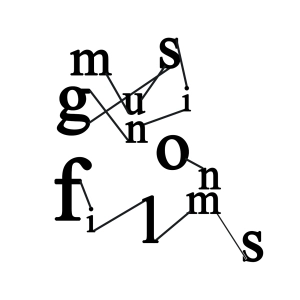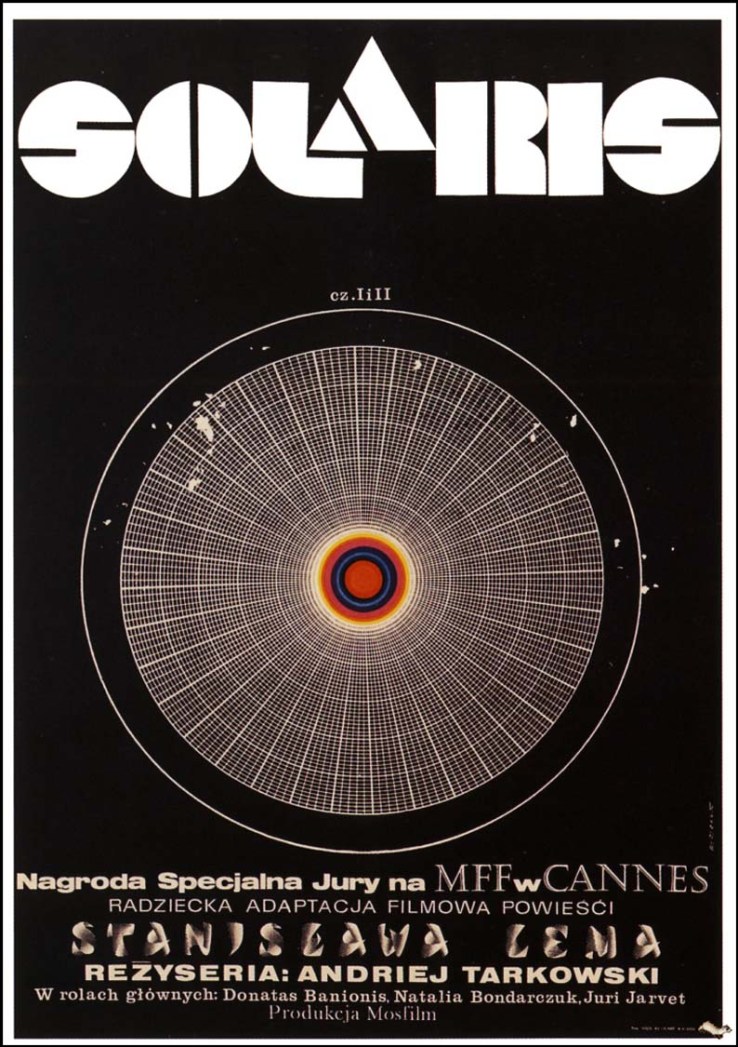
Andrei Tarkovsky is a director like few others. Ivan’s Childhood (1962) is a film of stunning images, placed within the final days of World War II; Andrei Rublev (1966) is a testament to scale and ideas; Solaris (1972) delves into the depths of memory and consciousness. Tarkovsky was in constant negotiation with censors over what his films could represent. Stalker was troubled from the start: shot on experimental Kodak 5247 stock, the initial print manifested an unwatchable dark green tint, leaving unending debate about whether it was accidental or sabotage. Tarkovsky reconceived, altering the character of Stalker and elaborating the film into a longer two-part epic under cinematographer Alexander Knyazhinsky.
Although the basis is the Strugatskys’ Roadside Picnic (1972), Tarkovsky wasn’t interested in a literal adaptation. As Mark Le Fanu writes, Roadside Picnic is “hard-boiled” science fiction rife with “slang and violence”, but underneath its dystopian vision is “a humanistic belief […] in the sacredness of the family unit”. Tarkovsky saw science fiction as a set of ““comic book” trappings and vulgar commercialism”, but the Zone is a descent into mystery, embodying a shifting state of reality. Stalker opens with an aura of documentary and the literary, grounded within science fiction and our own world, using a quote from Nobel Prize winner Professor Wallace as an epigraph.
What was it? A meteorite that fell to Earth? Or a visitation from outer space?
From the opening, Tarkovsky confronts us with uncertainty: no troops returned from this “miracle of miracles”. As Geoff Dyer highlights in his illuminating deconstruction and memoir on his own relationship with the film, Zona: A Book about a Film about a Journey to a Room (2012:5), this opening caption was added at the bequest of Mosfilm, situating the film within a small bourgeois country that wasn’t the USSR. The epigraph is never detrimental, nor should it be ignored, but essential to our perception. We learn Porcupine has come to the Zone as a Stalker before, never to return; skeletons are just another part of the landscape. But as Tarkovsky stresses in Sculpting in Time, “the Zone doesn’t symbolise anything”; the Zone is life itself (1986:200).
Filming around abandoned power plants and chemical factories around the River Jägala in Tallinn, Estonia, Tarkovsky scouted locations in Tajikistan, whilst considering Uzbekistan, Turkmenistan, Azerbaijan, Georgia, Ukraine and Crimea as possible alternatives. Conditions were harsh, likely leading to the cancer and early death of many of the cast and crew, including Tarkovsky himself: mechanic Sergei Bessmertniy describes a dirty river of reddish flakes and foam where fish still lived, coming off of “waste of pulp and paper”.
Stalker’s opening might present a sense of normality, presented in monochrome that is what Dyer describes as “muddy sepia of sleep that is like a dream of death” (2012:131), filmed in colour and printed in black and white, aesthetically unappealing yet perfect to mood. Tarkovsky intersects monochrome and colour throughout his work: Andrei Rublev closes in colour within the present, icons surviving storms and passing centuries, whilst Solaris set meeting scenes in monochrome through a televised window; Mirror (1975) uses similar techniques. In the opening shot, Tarkovsky forms a recurring tableau at the bar, rarely moving the camera. We move through a bedroom door with a sense of unreality, motion seemingly impossible as a frame forms around; we slowly pan across a girl in bed and objects upon a table, following routines of getting dressed. Our spaces are shipyards, not anywhere else.

Industrial and natural landscapes are both abandoned and untouched. Telegraph poles are embedded within the Zone’s landscape, grass sprouting up. Power plants and stone houses lay in the distance, buried by mist. Van Eyck’s icon of St John the Baptist lies submerged in water, a marker of human presence and faith. Writer lays down in the overgrowth, moss around him, a conscious vessel beside the life of nature itself. A lone dog walks through water, both in dream and reality. In seemingly endless sand dunes, a bird moves past, eerily looped as Tarkovsky repeats the footage, the bird disappearing from existence. In the fields, a dust storm moves upwards. In one incredible shot, Tarkovsky pans across the edge of a ridge into the black abyss of the water, before emerging again upon the other side. In a pool of water, the encircled surface shimmers. Moving inside a tunnel, stalagmites and stalactites line the circular roof, the Writer a lone figure.
In the film’s cyclicality, Tarkovsky returns to the opening setting. A girl, Monkey, reads a book as though reading the film as fable and parable. Shot in colour, the landscape is made more haunting: she walks by in side profile, snow falling. The family walks by with the dog as we glimpse a power plant in the distance. This could be the same family living in Chernobyl in 1986: the power plant behind them, unsuspecting of its power, another everyday family that became victims.
John A. Riley reads Stalker’s landscapes through the lens of hauntology, extrapolating upon Jacques Derrida’s theory of communism after the fall of the Berlin Wall in Spectres of Marx (1993). In his essay Hauntology, Ruins, and the Failure of the Future in Andrei Tarkovsky’s Stalker (Journal of Film & Video 69(1)), Riley writes that hauntology is both “a way of conceptualizing our repressed past” and a way to understand “our obsession with failed futures” (2017:19). For Riley, the film’s industrial ruins are “a trace of the economic stagnation” under Brezhnev, acting as a “monument to failure” (2017:21). As Dyer points out, the hydroelectric power plant within the film by the Jägala River had been blown up by the retreating Red Army during World War II (2012:61).
Tarkovsky’s use of the frame allows for an interesting relationship with the viewer. Writer looks out as though speaking to us. He sits upon a cylinder, turning to us in Shakesperean soliloquy; Tarkovsky’s cinematic stage becomes theatrical. He speaks in monologues, embodying his literary identity and confessing his deepest, darkest feelings. Stalker’s wife recites verses of Apocalypse, looking directly at us; Monkey recites Fyodor Tyutchev. As Dyer writes, Tarkovsky contravenes Roland Barthes’ edict that “it is forbidden for an actor to look at the camera” in cinema (2012:33), but Tarkovsky’s demolishing of the fourth wall allows for intimacy questioning the constraints of cinema itself. As rain falls, Tarkovsky pans out into the darkness, engulfing our protagonists as he finds another frame to act as border, making use of industrial landscapes.
Stalker never feels like political commentary; Tarkovsky achieves timelessness extending beyond everyday politics. But there are some suggestions. In the opening act, set against barbed wire, we feel a sense of power through armed guards. For Dyer, “Stalker is not a film about the Gulag, but the absent and unmentioned Gulag is constantly suggested” (2012:17). Le Fanu draws a direct line between Stalker and his films directed in European exile, Nostalgia (1983) and The Sacrifice (1986), drawing upon Tarkovsky’s personal diaries: as Tarkovsky dreamt of imprisonment, he envisioned a “Cold War fantasy of breaking through barriers”.
Tarkovsky saw cinema as literary, drawing upon a prehistory of Renaissance art and Baroque music that acknowledges minds and innovators before him; Tarkovsky is one voice. As he describes in Sculpting in Time, even in structure he wanted to “observe [Aristotle’s] three unities of time, space and action”, each frame flowing into each other. (1986:193) Le Fanu argues Tarkovsky’s literary habits were “imperceptibly feeding ideas into one another”, reading The Idiot (1869) and The Death of Ivan Ilych (1986) and working on a stage adaptation of Hamlet (1977). The concept of Stalker might seem the beginning of a joke: three men walk into a bar. But Tarkovsky uses the archetypes of Writer and Professor, guided by Stalker, to craft an allegory delving within the realms of consciousness. Stalker’s characters act as philosophical interlocutors, conveying ideas as they move through a landscape. As Pedro Blas Gonzalez writes, Tarkovsky’s axioms of knowledge achieve “with cinema what Plato accomplished in philosophical discourse”.
Through Writer, Tarkovsky channels his own insecurities and feelings as a director, resonating with all aspiring artists and creatives out there. For all creative people, there is the question of legacy. Writer questions the purpose of writing itself and importance of reception, and whether his words will be remembered a hundred years from now. He detests writing as “torture” and “a painful, shameful occupation”, yet continues onwards with his craft, something I identify with strongly. As Tarkovsky comments in Sculpting in Time, “artists work at their professions not for the sake of telling someone about something, but as an assertion of their will to serve people”; but no artist can freely create, but is “created by his time and the people amongst whom he lives.” (1986:181) Both the Writer and Professor embody a certain spiritual dimension: the Writer conveys words of meaning; the Professor must seek truth within the world. Framing his characters in side profile, Tarkovsky encourages an exploration within the mind itself.

Tarkovsky bears comparison to a director like Terrence Malick: spirituality becomes indivisible from both the person and the work, permeating not only philosophical discussions of meaning but natural landscapes. Ivan’s Childhood ends with a child upon a beach, a heavenly calm beyond the chaos of war; Andrei Rublev examines the life of an icon painter; Solaris seeks God within the infinity of the cosmos and memory itself. Tarkovsky elaborates upon the theological hints within Roadside Picnic, using the Stalker as what Gonzalez describes as “a kind of Prometheus that disperses cosmic secrets to man”, but “cannot guarantee the moral and spiritual integrity of those who enter with him.” In the Room, the bomb becomes a test of faith to whether it is activated or not. The supernatural powers of Monkey are a display of the powers of miracle and belief, moving the cups in front of her with a clatter, reportedly inspired by Russian telekinetic psychic Ninel Sergeyevna Kulagina. In the BFI piece, Vladimir Sharun comments that Tarkovsky both believed in miracles and “the existence of flying saucers”, “all harmoniously combined with his faith in God.”
Stalker asks us the meaning of music itself: not connected to reality and devoid of association, yet transcendent within itself. Stalker’s use of music is intermittent, as is dialogue. But Stalker is built through its music and soundscapes. As Tarkovsky writes in Sculpting in Time, music creates a “necessary distortion of the visual material in the audience’s perception” to “prompt the emotions of the audience in a particular direction”, acting not just as an “appendage” but as “an essential element of the realisation of the concept as a whole.” (1986:158) Having previously worked with Eduard Artemyev on Solaris and Mirror, Artemyev’s synthesised musique concrete score combines Oriental and Eastern influences, including an Azerbaijani tar and flute. Stalker confronts us with the intensity of the vibrations of a passing train, shaking the world around us; Stalker’s sounds are visceral to our very core.










You must be logged in to post a comment.